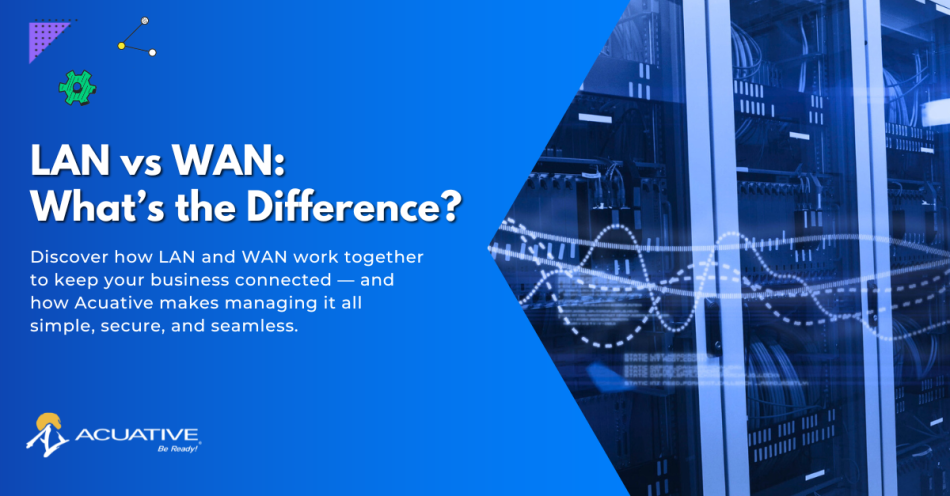Jonathan Balin
The world of telecommunications can sound like a maze of acronyms and buzzwords — LAN, WAN, SD-WAN, MPLS, VPN — and that’s just the start. For anyone new to the industry, it can feel overwhelming to make sense of what all these terms mean. But at the heart of it, networking is simply about how devices connect and share information. Two of the most important building blocks of that connection are LAN and WAN.
What Is a LAN?
A Local Area Network (LAN) is a small, private network that connects devices in one place — like an office, store, or school.
It’s what allows employees to share printers, access shared files, or connect to Wi-Fi without ever leaving the building.
A LAN usually includes:
• Switches and routers to manage and direct traffic
• Ethernet cables or Wi-Fi to connect devices
• Firewalls and access points to keep the network secure
You can think of your LAN as your office’s internal road system: fast, efficient, and built for local traffic only.
What Is a WAN?
A Wide Area Network (WAN) connects multiple LANs across different locations — like offices in different cities or countries.
It’s how a company’s headquarters can share data with branch offices or remote employees as if they were in the same building.
A WAN might use:
• Private circuits such as MPLS or SD-WAN for reliable performance
• VPN connections to keep remote users secure
• Routers and firewalls to route and protect data
If your LAN is your local road system, your WAN is the highway network that links multiple cities together.
How the Internet Fits In
The Internet is essentially the biggest WAN on Earth. It connects millions of smaller networks — business, government, and home networks — so data can move anywhere in the world.
For example, here’s what happens when you visit a website like Wikipedia:
1. Your computer sends a request through your LAN (via Wi-Fi or Ethernet).
2. It goes out through your Internet Service Provider (ISP), which is part of a larger WAN.
3. From there, it travels through high-speed fiber cables and routers that link countries and continents.
4. The request reaches Wikipedia’s server, which sends the data back the same way.
All of this happens in just fractions of a second.
Why Managed LAN and WAN Matter
Setting up and maintaining business networks isn’t as simple as plugging in a router. Between hardware setup, software configuration, and coordinating with multiple Internet Service Providers (ISPs), there are a lot of moving parts that can affect performance and reliability.
That’s where Managed Service Providers (MSPs) come in. MSPs help design, implement, and manage both LAN and WAN environments so businesses don’t have to handle the technical complexity themselves.
They make sure your LAN is properly configured for speed, security, and scalability — and that your WAN efficiently connects every office or remote location. MSPs also act as a bridge between your business and your ISPs, helping you navigate carrier relationships, service agreements, and troubleshooting when issues arise.
In short, a good MSP ensures your entire network — from local connections to global links — runs smoothly, securely, and with minimal downtime.
Keep Your Network Running Strong
Your LAN connects your team. Your WAN connects your business. Together, they form the foundation of everything you do online — and that foundation needs to be strong, secure, and adaptable.
That’s where Acuative stands apart. Unlike many MSPs, Acuative offers end-to-end network expertise — from design and implementation to 24/7 monitoring, field services, and lifecycle management. Our teams don’t just manage your network remotely; we also provide on-site engineering and deployment support through our nationwide field service network. Whether you’re expanding locations, upgrading infrastructure, or optimizing performance, Acuative delivers the reliability and visibility your business depends on.
Learn more about Acuative’s Managed LAN and Managed WAN Services and see how we can help you build a network that powers every connection — local or global.

